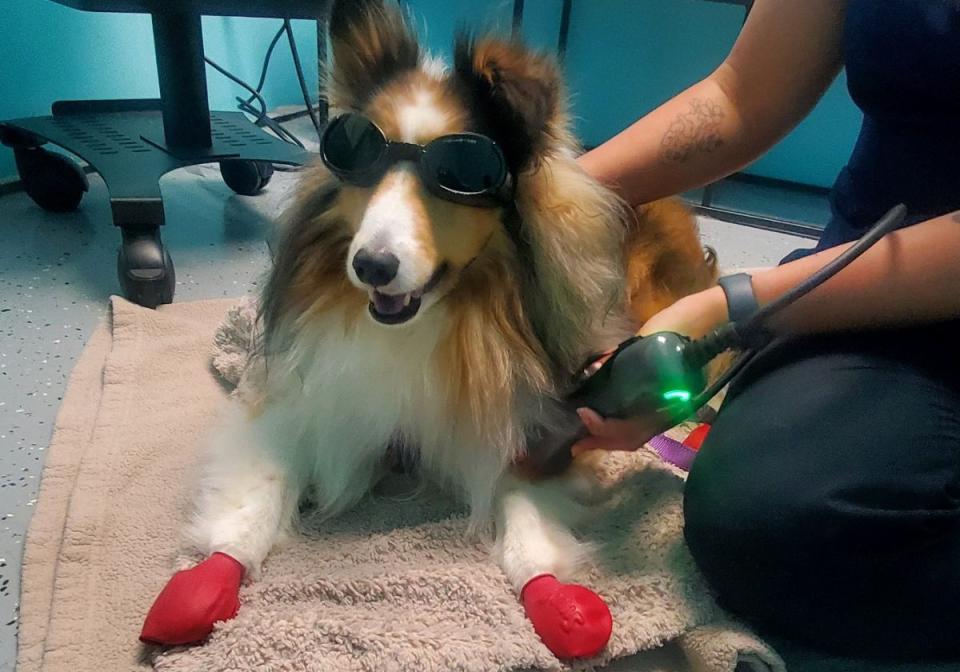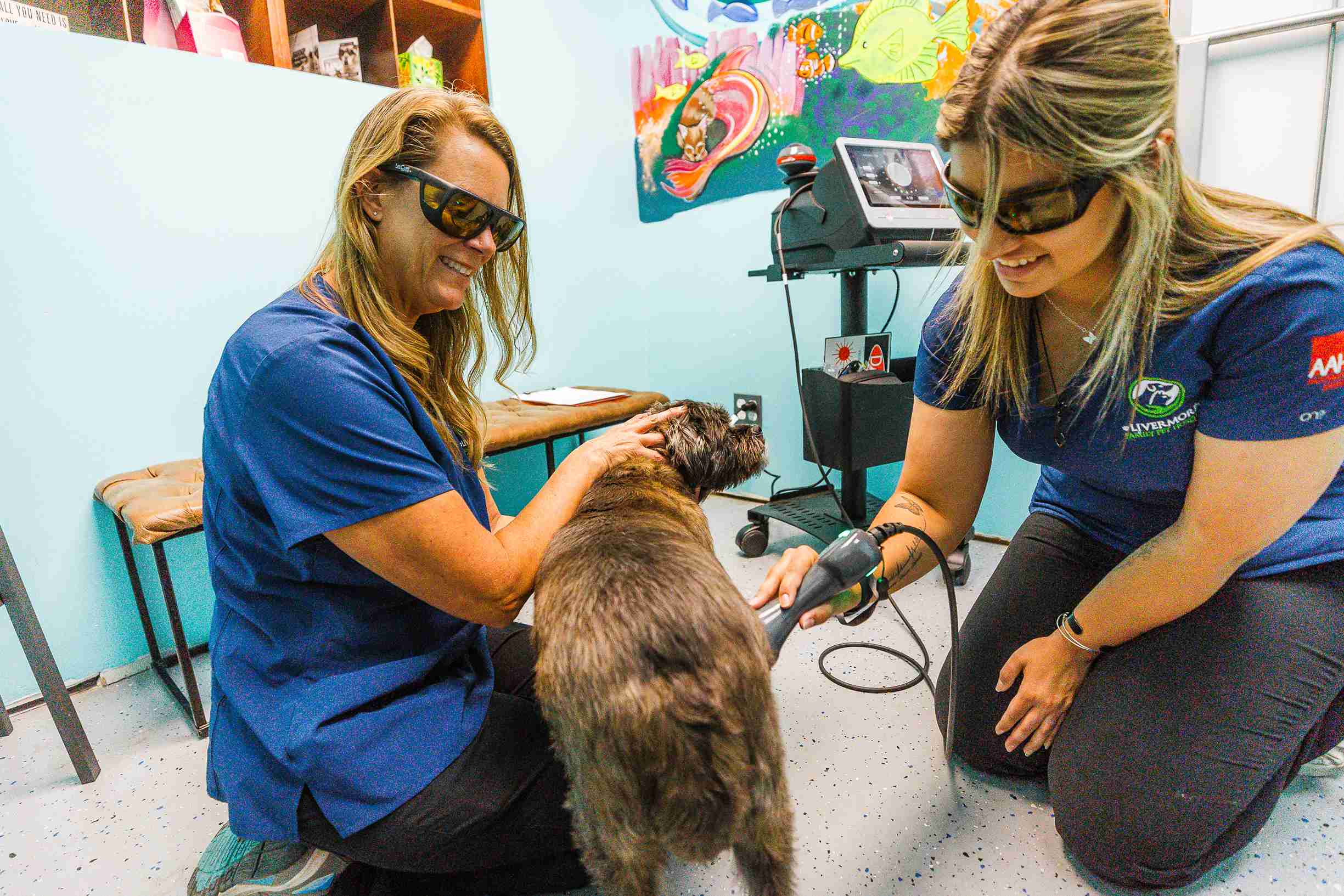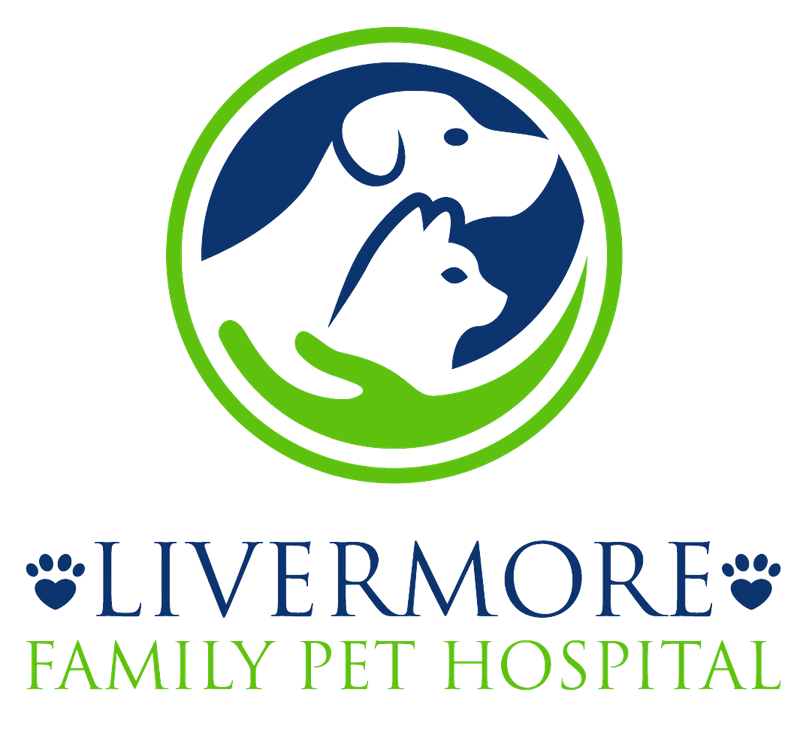
Meet Sundance—“Sunny” to his friends. With his stylish doggles and a wag in his step, Sunny looks like the picture of confidence as he enjoys his cold laser therapy session with our gentle, trained patient care team. What you might not see at first glance is that Sunny lives with arthritis in his spine, elbows, hips, and ankles. But thanks to Companion Class 4 cold laser therapy, he’s able to move more comfortably—and even show off his signature fluff after a session.
Cold laser therapy, also known as low-level laser therapy (LLLT), is a non-invasive, pain-free treatment that helps relieve pain, reduce inflammation, and improve circulation. The laser’s gentle light energy penetrates deep into the tissues, helping your dog’s body heal naturally from the inside out.
Not all lasers are created equal. Our Companion Class 4 cold laser is a high-quality, therapeutic-grade system that delivers noticeable results—often in fewer sessions than standard devices.
For dogs with arthritis or joint pain, cold laser therapy can be a life-changing addition to their care plan. It not only reduces discomfort and improves mobility, but can also help heal wounds, soothe chronic inflammation, and restore quality of life.
Each dog responds differently, and we’ll tailor the number of sessions based on your dog’s individual needs. Many dogs feel relief after just a few visits, with ongoing maintenance sessions helping to manage long-term symptoms.
If your dog is slowing down, showing signs of stiffness, or struggling with arthritis, we’re here to help. Ask us about cold laser therapy and how it might bring comfort, movement, and tail wags back into your dog’s life.
Daisy first presented to LFPH with limited mobility on the 18th of April. Doctor Shubin provided an examination and recommended laser therapy as a noninvasive treatment to help soothe her pain in her back.
When Daisy showed up for her first treatment, it was understandable that she was shaking, as painful pets do on occasion.
Cold Laser therapy, such as the one in the video, is a drug-free, side-effect free treatment that targets the damaged cells and helps them regenerate faster. It’s very similar to the sunlight helping a plant produce energy.
Pets will feel a gentle, soothing warmth as their pain starts to ease. In fact, most pets are relaxed by the end of their treatment, and some simply fall asleep.
By the end of Daisy’s treatment, she was relaxed, and even moved more freely than she did at first. Seeing her improvement, and how cool the doggles look on her, Daisy will be back for more.
It's important to note that cold laser therapy should be done by a trained professional veterinarian and veterinary care team who is knowledgeable in the use of the therapy and can determine the best treatment plan based on the dog's specific condition and needs.


